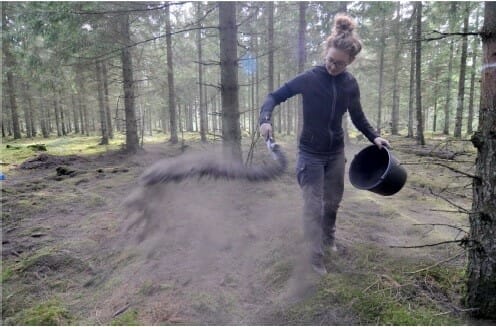Universitetsavisen
Nørregade 10
1165 København K
Tlf: 21 17 95 65 (man-fre kl. 9-15)
E-mail: uni-avis@adm.ku.dk
PhD thesis defense
PhD thesis defense — The Mette Hansen defence on 2 March
Date & Time:
Place:
Von Langen Auditorium, Department of Geosciences and Natural Resource Management, Rolighedsvej 23, 1958 København K
Hosted by:
Section for Forest, Nature and Biomass
Cost:
Free
Mette Hansen defends her thesis,
Environmental effects of ash application in forest ecosystems
– From a soil perspective
Supervisor:
Associate Professor Morten Ingerslev, IGN
Assessment Committee:
Professor Heljä-Sisko Helmisaari, Department of Forest Sciences, University of HelsinkiAssociate Professor Bengt Olsson, Department of Ecology, Swedish University of Agricultural Sciences
Professor Lars Vesterdal (chair), IGN
Summary:
Wood ash application is used in forest ecosystems to counteract acidification and nutrient losses due to intensified harvesting methods. A political focus on replacing fossil fuels with renewable energy sources like biomass will increase both the amount of ashes being produced and the export of nutrients from the forests. This PhD project aims at investigating how ash application in forest ecosystems affects soil and soil solution properties and whether ash application can be used in a Danish context without environmental harm, but with positive effects to the soil environment, focusing on the effect of applying ash at different doses.
Field and laboratory experiments were conducted including field trials, focusing on ash application rate and different compositions of ashes at both short and long term scale, and laboratory experiments using pH microsensors, soil incubation, FTIR-PAS and thermal analysis techniques. Based on these, I found that ash application can improve the forest soil conditions in terms of increasing the nutrient concentrations and soil pH, primarily in the O-horizon. Higher doses of ash increase the effect while the composition of ash does not change the effect markedly. The disadvantages of ash application is primarily the accumulation of heavy metals in the O-horizon, as ash application does not change the mobility and flux of heavy metals out of the soil, independent of dose, in this study. Ash application can change the C cycle in the soil. The soil C concentrations tended to decrease after ash application as the mineralization rate increased, but no increased CO2 efflux was detected. The SOM composition and stability to microbial degradation changed in the O-horizon, but not in the mineral soil. The labile fraction of SOM increased and the thermal stability decreased in the O-horizon. If increased plant or microbial biomass input does not balance the increased mineralisation rate, ash application can have negative impact on the soil capacity to store C.
This PhD study shows that ash application can be used in a Danish context without environmental harm. To ensure the practice to be more widespread than it is today, measures can be made to improve the Danish legislation defining the rules for ash application. Based on my findings, I suggest that the dose of ash applied is increased to 6 Mg ha-1 instead of 3 Mg ha-1, while at the same time reducing the initial Cd concentration in the ash and/or prohibiting the use of fly ashes alone.
The thesis is available for inspection at the PhD administration office 04.1.413 at Øster Voldgade 10
